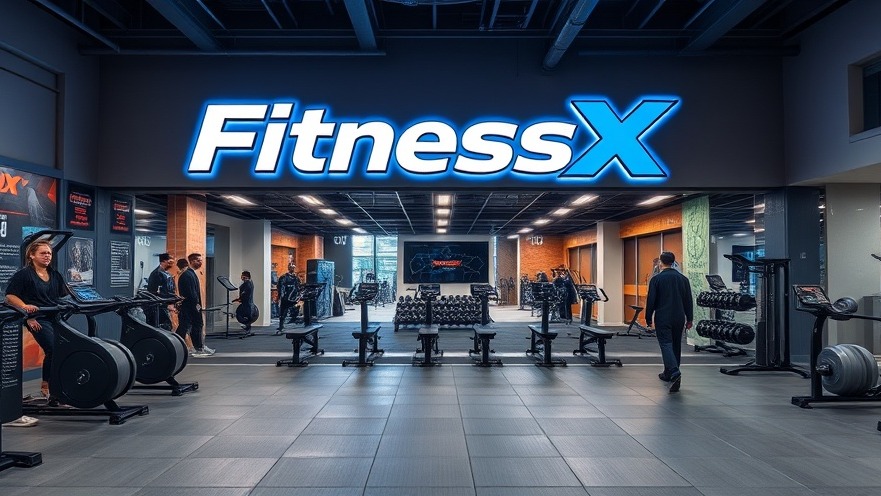In the increasingly competitive fitness market, local gyms are rising above big chain franchises by focusing on personalized member care, community building, and authentic connections. Jim, owner of FitnessX, shares his insights on how smaller gyms can thrive by centering their approach on people rather than just equipment or scale.

Introduction: The Growing Competition Between Local Gyms and Big Chains
The fitness industry today is marked by stiff competition between large chain gyms and smaller local gyms. Big chains often advertise extensive facilities, memberships, and convenience, drawing in large numbers of customers. However, local gyms like FitnessX are gaining significant momentum by emphasizing what big gyms can sometimes miss—deep personal connections and community engagement.
Jim, owner of FitnessX, shares, "We’re not just about reps and weights — we’re about helping people live stronger, healthier lives on every level." This philosophy drives how FitnessX creates value for members in ways that matter beyond typical gym offerings. Such a focus allows local gyms to carve out a loyal client base despite the marketing power of big chains.
Understanding the Landscape of Local Gyms vs Big Chains
Big chain gyms often leverage scale to offer a wide range of facilities and sometimes lower prices due to economies of scale. They cater to volume, often with less focus on personalized service. Local gyms, meanwhile, operate on a more intimate scale, fostering relationships with members and understanding their individual fitness journeys.
This difference creates two distinct gym experiences. While large gyms focus on convenience and comprehensive equipment, smaller gyms become community hubs where members feel seen and supported. The rising demand for more personalized and accountable fitness experiences has helped local gyms build a growing presence in many communities.
Why Local Gyms Like FitnessX Are Gaining Momentum
FitnessX has built a reputation through an authentic approach to fitness as lifestyle and community. Jim began as a personal trainer with a vision of creating a gym that feels like family. "Our mission is to empower members to take control of their health through accountability and community," Jim explains. This has resonated strongly with members seeking more than just a workout space.
By combining fitness programs with wellness workshops, charity events, and youth activities, FitnessX connects members beyond exercise — strengthening both motivation and loyalty. This holistic engagement is a key reason why local gyms have an edge in fostering member retention and strong word-of-mouth referrals in their neighborhoods.
What You'll Learn in This Article
Key differences between local gyms and big chains
How community and personal connection drive member loyalty
Challenges local gyms face and strategies to overcome them
Expert insights from Jim, owner of FitnessX
Actionable tips for gym owners and fitness enthusiasts
The Unique Value Proposition of Local Gyms in the Fitness Industry
Personalized Member Experience and Community Building
One of the hallmark strengths of local gyms is their ability to tailor the member experience to individual needs. Jim, owner of FitnessX, explains, "We know our members by name, we track their progress personally, and our coaches reach out if someone misses a week. That accountability — that care — you just can’t automate that." This personal engagement fosters trust and motivates members, leading to higher retention and satisfaction.
The sense of belonging cultivated through these relationships transforms a gym from a mere workout place into a supportive community. Members feel encouraged to stay consistent because they are valued well beyond transactions or memberships. This personalized approach is difficult for big chains to replicate at scale.

Focus on Lifestyle and Holistic Wellness
Local gyms like FitnessX embrace the idea that fitness is a lifestyle, not just an activity. This broader mindset includes nutrition guidance, mental wellness, and habits that influence overall health. FitnessX hosts wellness workshops and youth fitness events, demonstrating commitment to holistic health beyond the gym floor.
This comprehensive approach appeals to members seeking sustainable, long-term benefits from their fitness investment. It also solidifies the gym’s role as a partner in wellness and community support, further differentiating local gyms from big chains focused primarily on equipment and classes.
Local Engagement Through Events and Workshops
Community events create meaningful touchpoints for member connection and external visibility. Hosting charity bootcamps and free local fitness classes establishes goodwill and portrays the gym as a supportive pillar of the neighborhood. This outreach attracts new prospects and reinforces loyalty among existing members.

Comparing Local Gyms vs Big Chains: Strengths and Challenges
Aspect |
Local Gyms |
Big Chains |
|---|---|---|
Member Connection |
High personal interaction and accountability |
More automated and less personal |
Facilities |
Smaller but community-focused |
Larger with extensive equipment |
Pricing |
Competitive with flexible options |
Often higher with more amenities |
Marketing |
Word-of-mouth and local events |
Broad advertising and promotions |
Adaptability |
Quick to implement community needs |
Slower due to scale |
Challenges Faced by Local Gyms
Local gyms often struggle with maintaining a consistent flow of new member leads throughout the year. Jim shares, "Honestly, lead consistency is our biggest challenge. We get strong word-of-mouth referrals, but like most gyms, there are slow months where inquiries drop." Without large marketing budgets, many local gyms rely heavily on organic growth, which can fluctuate unpredictably.
Additionally, managing administrative tasks without extensive resources can hamper operational efficiency. However, these challenges provide local gyms with opportunities to innovate and deepen member relationships through personal touch and technology adoption.
How Big Chains Leverage Scale and Convenience
Big chains capitalize on brand recognition, large facility footprints, and numerous locations to attract a diverse range of customers. Their marketing budgets enable broad advertising campaigns and promotional offers. They also invest heavily in state-of-the-art equipment and amenities, which appeal to some segments of the fitness market.
Despite these advantages, their size and standardized approach often limit the personalization and community feel smaller gyms provide. This gap is where local gyms like FitnessX differentiate themselves by fostering a unique culture tailored to local needs.
Expert Insights: How FitnessX Thrives Amidst Competition
Building a Family-Like Atmosphere
Jim emphasizes that FitnessX’s success stems from creating a welcoming, family-like environment. "We’re not just about reps and weights — we’re about helping people live stronger, healthier lives on every level," he says. This mindset encourages members to engage more deeply with their fitness journeys and with each other, increasing retention and satisfaction.
Innovative Community Programs and Member Support
FitnessX distinguishes itself through programs that foster community engagement and support member wellness beyond exercise routines. Hosting workshops, bootcamps, and youth fitness initiatives strengthens bonds with members and the wider community. Coaches reaching out after missed sessions demonstrate genuine care that builds trust and accountability.

Future Vision: Expanding Community Impact Without Losing Culture
Looking ahead, Jim’s vision for FitnessX includes opening new locations focused on family and youth programs, replicating the gym’s culture rather than franchising. This strategy highlights the importance of maintaining the personal and community-driven approach that sets FitnessX apart.
Actionable Tips for Local Gyms to Compete with Big Chains
Focus on personalized member engagement and accountability. Know your members by name, track progress, and reach out regularly.
Host community events and wellness workshops regularly. Create opportunities for connection beyond workouts.
Leverage social media and local partnerships for marketing. Build authentic local brand awareness.
Invest in technology to automate administrative tasks. Free your team to focus on member relationships.
Maintain a strong, authentic brand personality. Be friendly, focused, and driven with heart.

Common Misconceptions About Local Gyms vs Big Chains
Local gyms lack quality equipment — many have modern, well-maintained facilities.
Big chains offer better value — local gyms provide personalized service that adds value.
Local gyms can’t scale — culture replication is possible with the right approach.
People Also Ask
What are the main differences between local gyms and big chains?
Local gyms focus on personalized service, community connections, and accountability, often with smaller-scale facilities. Big chains prioritize extensive equipment, brand recognition, and convenience with automated services and mass marketing.
How do local gyms build stronger communities?
By fostering personal relationships, hosting events, wellness workshops, and maintaining consistent member outreach, local gyms create supportive environments where members feel seen and motivated.
What challenges do local gyms face compared to big chains?
They often struggle with lead consistency, marketing reach, and handling administrative tasks efficiently due to limited resources relative to large chains.
Can local gyms compete with big chains on pricing and facilities?
Local gyms offer competitive pricing with flexible options and maintain quality, focusing instead on personalized experience and community, which many big chains can’t replicate.
Key Takeaways
Local gyms excel in personal connection and community engagement.
Big chains offer scale and convenience but often lack personalized service.
Challenges like lead consistency can be mitigated with technology and marketing.
FitnessX exemplifies how culture and accountability drive member loyalty.
Local gyms can thrive by focusing on lifestyle, support, and authentic relationships.
Conclusion: The Future of Local Gyms in a Competitive Market
Jim concludes, "If five years from now I can look around and see a thriving team, a packed floor, and members who genuinely love being here — that’s success for me."
Gym owners should focus on cultivating community culture, personalized service, and leveraging technology to stay competitive in an evolving fitness landscape.
Call to Action
Explore local gyms in your area to experience personalized fitness support.
Gym owners: invest in community-building and member accountability.
Stay informed on industry trends to keep your fitness business competitive.
 Add Row
Add Row  Add
Add 

Write A Comment